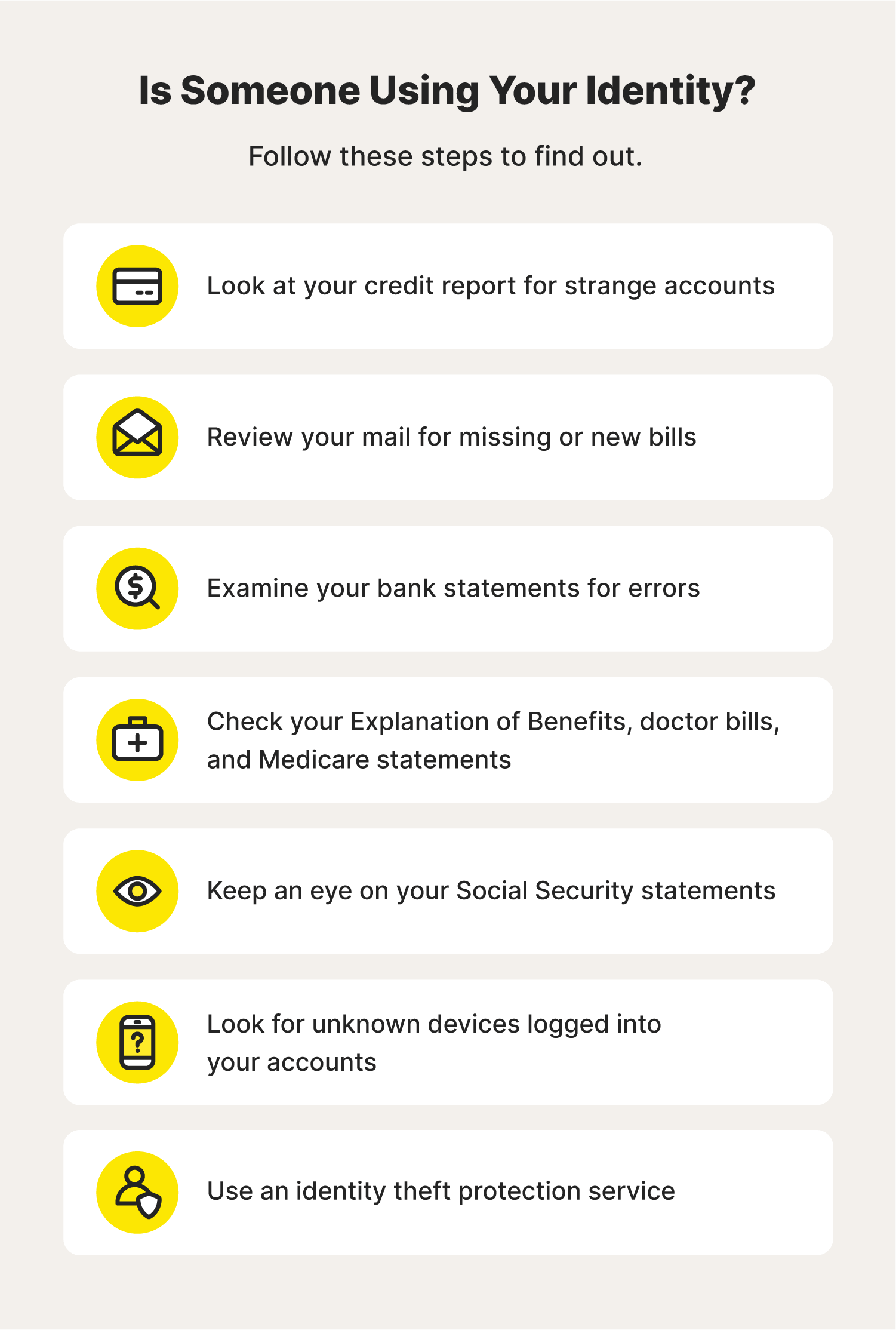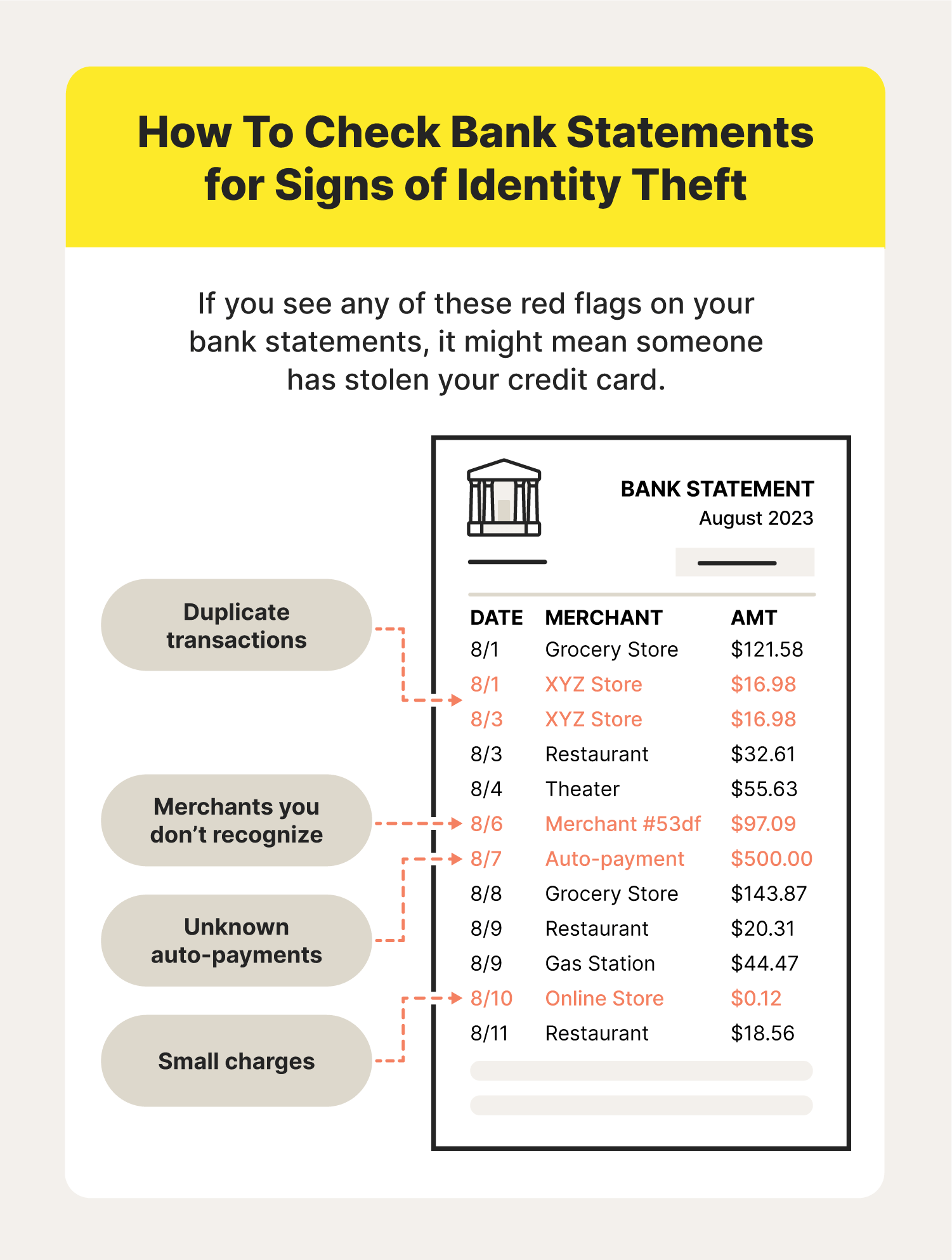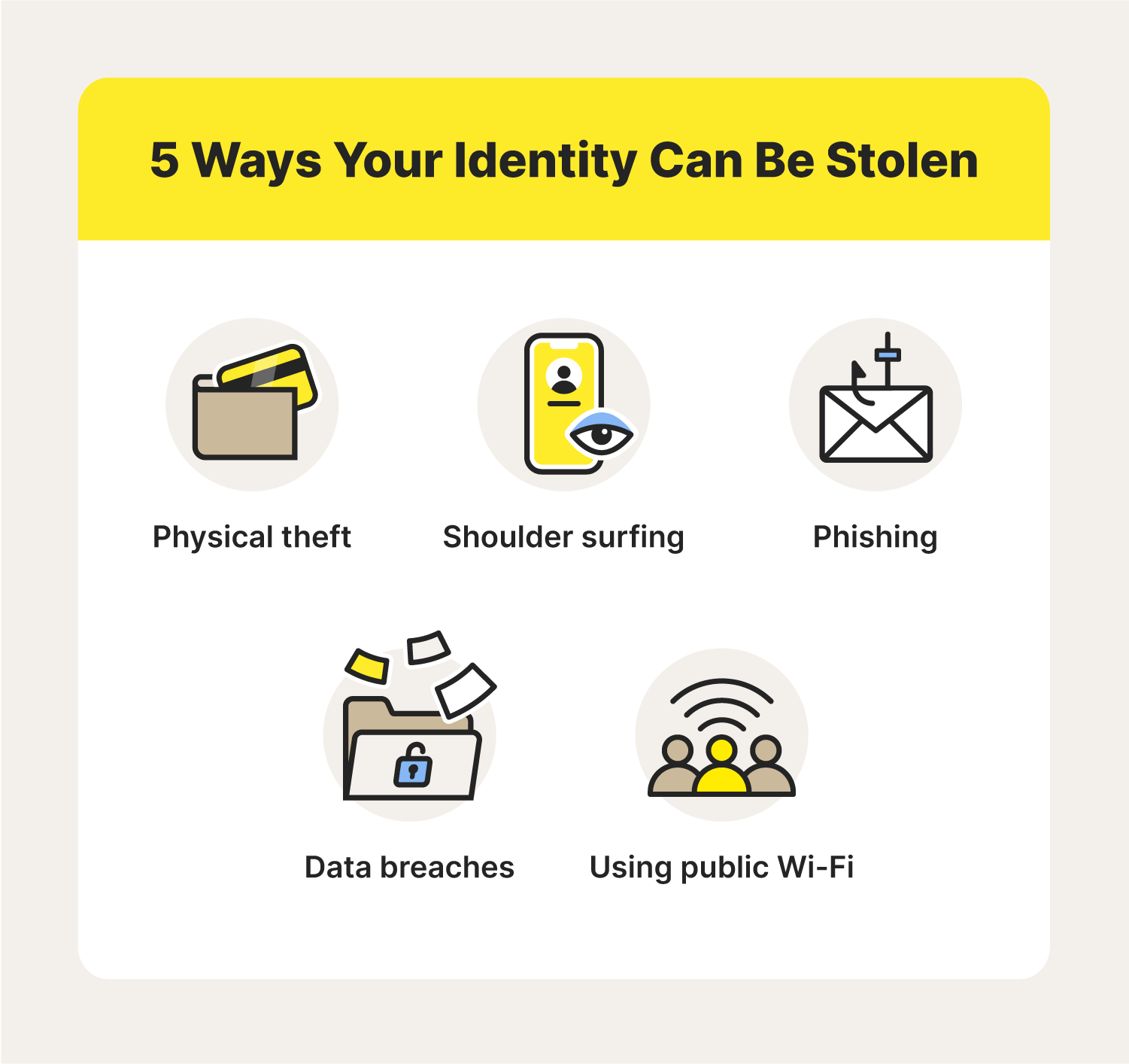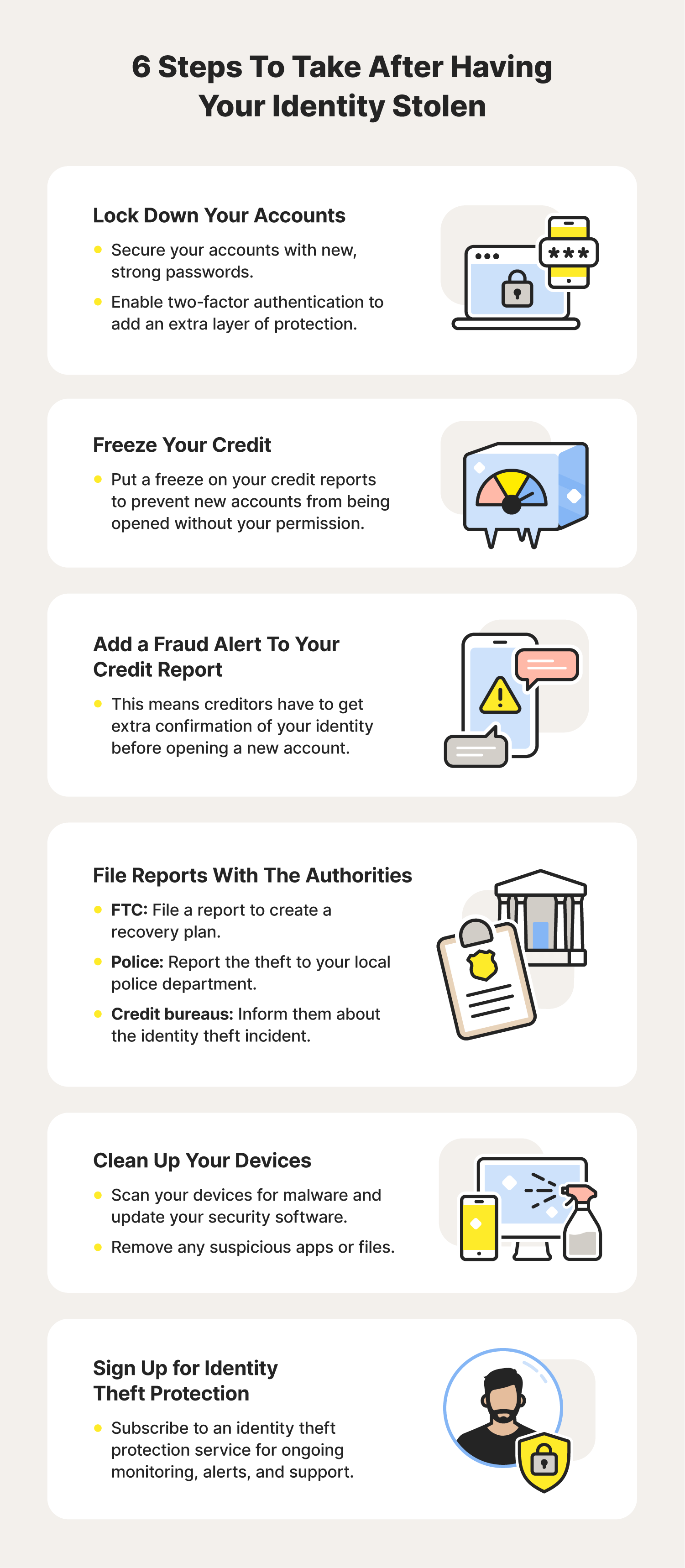
1. Check your credit report for strange accounts or mistakes
One of the best ways to check if someone has been using your identity is to look at your credit report. Because your credit report has information about your credit accounts and credit applications, you can tell immediately if someone has tried to use your identity.
There are a few ways you can access your credit report. First, go to AnnualCreditReport.com and request copies of your reports from the major credit bureaus. You can get your reports for free annually using the Annual Credit Report site. Another way to check your credit reports is to sign up for a service that lets you check your reports whenever you want, like LifeLock Ultimate Plus, which offers daily credit reports from a single bureau. The credit bureaus usually run these services, and they might cost money.
The first area you should examine on your credit report is the “accounts” section to look for new accounts or accounts you didn’t sign up for. If you see suspicious activity or accounts on your credit report, follow these steps:
- Put a freeze on your credit report. This will prevent any other applications from being processed.
- Reach out to the institutions that issued the credit and inform them of the credit card fraud. You can request additional information about how, where, and when the account was opened and find out what they need from you to close it.
- Report the fraud to the FTC and the police. For some accounts to be closed, you may need a police report. The FTC also has some helpful tips for how to handle identity theft.
2. Review your mail
It’s tough keeping track of every piece of mail that gets delivered to your home, but checking that you’re receiving your bills each month (and that you aren’t receiving bills for credit cards you didn’t apply for) is an important way to check if someone is using your identity.
Here’s how to make reviewing your mail easier:
- Make a list of all of the bills you receive in the mail as they come in, then check them off that list each month while you’re paying them.
- For any bills you’re paying online, check that the address they have on file is correct and that you opted out of physical mailing.
If any of your paper bills go missing, contact the company to see if your address was recently changed or if they went paperless. If your address changed, let them know that someone may be committing mail fraud to try to steal your identity. The company may lock your account until an investigation is complete, but make sure you still pay any outstanding debt owed.
If you receive a bill for a service or account you didn’t sign up for, contact the business as soon as possible to inform them that someone is using your identity. It’s also a good idea to check your credit report and dispute any accounts that aren’t yours, especially if they’re overdue or in collections.
3. Check your bank statements for errors
With online banking, it’s easier than ever to stay on top of your finances, but because it’s easier to check, it can be easy to miss things, too. One of the fastest ways to check if someone is using your identity is if you see purchases you didn’t make on your bank statement. Sorting through every transaction can take time, but if it means catching the problem before someone spends all of your money, it will be worth it.
Here are a few small signs to look out for on your bank statements:
- Duplicate transactions: A scammer might try to charge you multiple times for the same purchase.
- Small charges: Scammers might start by making small purchases to see if you’re paying attention to how much money is in your account.
- Merchant names you don’t recognize: Shopping online makes it a bit tougher to directly match the name of a store to the merchant name, but double check the times when you place orders if you aren’t sure.
- Automatic payments you don’t recognize: Automatic payments could be a sign that someone is using your identity and sending regular payments to themselves.
Contact your bank if you have any questions about any of the charges on your statements, and to report any fraudulent transactions.

4. Look at your health records
Lots of people assume that identity thieves are simply after credit cards and Social Security numbers, but medical identity theft is one of the most common ways that people use another’s identity.
To see if someone has been using your identity to receive medical care, check these places:
- Explanation of Benefits (EOB): Your EOB provides an overview of care you received from a healthcare provider and information about how much your insurance company will cover and when. If you start receiving an EOB for medical services, prescriptions, or medical equipment you didn’t receive, contact your insurer immediately.
- Medical bills: If you receive medical bills for services you haven’t received, contact the doctor and your insurance company as soon as possible.
- Medicare statements: Medicare fraud and Medicare scams are becoming more common, so look at your Medicare statements to check that no one is committing fraud in your name. And watch out for other scams that target the elderly.
If you fail to act on medical identity fraud, you could lose your Medicare coverage or be denied care because you’ve met your insurance plan’s limits.
5. Monitor your Social Security statements
Your Social Security statement might be the first place you see the evidence that someone else is using your identity. If someone else is using your name and Social Security number for employment, everything they earn is being attached to your name.
The Internal Revenue Service (IRS) will use the income they earn to determine your taxable income, and you’ll be responsible for paying taxes on income that isn’t yours.
If you see this income on your Social Security statements, contact the Social Security Administration and the IRS to report what happened.
6. Look for unknown devices logged into your accounts
Because we store so much of our information on our devices, the main accounts attached to these devices are prime targets for people who want to steal someone’s identity. Regularly check that all the devices attached to your account are actually yours, and remove access from ones you no longer use. An extra device connected to your account might mean someone is trying to use your identity.
If you see unauthorized devices:
- Create a new, stronger password than you currently have
- Revoke access and end all open sessions
- Enable the strongest security options available, including two-factor authentication whenever you can to add an extra layer of protection
- Check any connected accounts for suspicious activity
- Update your devices for the most up-to-date security settings
- Run a virus and malware scan
- Change other passwords using stronger, more secure passwords
Using an encrypted password manager and a VPN like Norton VPN can help protect your devices going forward.
7. Use identity theft protection services
Identity theft protection services are there to inform you of when your information could be in the hands of identity thieves. By regularly scanning the dark web and monitoring data breaches, these services, including LifeLock Standard, are on the lookout for your personally identifiable information in places it shouldn’t be.
Because these services have the specialized training and hardware necessary to perform identity theft checks around the clock and alert you when your identity may have been compromised, subscribing is one of the best ways to see if someone might be using your information for their gain.
These services can:
- Monitor the credit bureaus to see if someone has tried to open a new account in your name
- Help you lock down your identity if it has been stolen
- Enlist expert help, including attorneys, to help resolve your case
- Provide reimbursement for stolen funds
Not sure how your personal information got into the hands of a criminal in the first place? It might surprise you how many different ways your data can end up on the dark web or sold between thieves. Get LifeLock Select to help protect against identity fraud and help secure your finances, credit, and reputation
How does identity theft happen, anyway?

From phishing email messages that look like they’re sent from someone you know or a business you frequent to having your data exposed during a breach at your insurance company, identity theft comes in many shapes. Being aware of how it could happen can help you protect your data better. Some of the most common methods of identity theft include:
- Phishing: These types of scams trick users into providing their data directly to criminals, inadvertently creating openings that expose their data, or downloading dangerous malware.
- Shoulder surfing: When a criminal spies on someone using their smartphone, tablet, computer, or an ATM, they can learn that person’s sensitive information and steal their identity.
- Physical theft: Thieves will steal someone’s purse or wallet, break into their homes, or even dig through trash looking for sensitive information.
- Data breaches: A hacker breaks into secure databases, downloads sensitive data, and then distributes or sells it.
- Using public Wi-Fi: Unsecured public internet connections can expose you to vulnerabilities that make it easier for hackers to exploit.
But what happens if you do everything right and your identity is stolen anyway?
6 steps to take if you’re the victim of identity theft
Identity theft can be devastating. Not only does knowing that someone has a great deal of information about you shatter your sense of safety and security, but it can also create financial problems that can take a long time to recover from.
But if you act quickly after your identity has been stolen, you can reduce the overall effects of the thief’s efforts.
- Lock down your accounts: This will look different for each of your accounts, but at the very least, you should change your passwords, enable two-factor authentication, and revoke access for other devices.
- Freeze your credit: Each of the main credit bureaus lets you freeze your credit report. While you need a credit freeze if your identity has been compromised, it might be a good idea to keep it frozen until you apply for new credit, to reduce the risk of someone trying to open accounts in your name.
- Add a fraud alert to your credit report: After you freeze your credit, report the identity theft to the credit bureaus. If you aren’t certain your identity is stolen but suspect it is (or that some of your information was exposed), put a fraud alert on your credit report. This will prompt lenders to ask for extra identifying information when someone applies for credit using your name.
- Report ID theft to the FTC, banks, and police: The Federal Trade Commission has a website devoted to dealing with this kind of crime, and they’ll show you how to create a recovery plan. Informing your banks will enable them to implement stricter controls on your accounts. You should also report any identity theft to the police.
- Clean up your devices: If you have security software that detects and removes viruses and malware, run it as soon as possible. Update your operating systems, antivirus and anti-malware software, and all of the applications you normally use before you try logging into any of your accounts. Delete any apps you don’t use anymore, along with any suspicious files.
- Use identity theft protection: Identity theft protection is worth it, especially if you’re at heightened risk for identity theft. These services understand how and where to look for your data and they can work to contain the damage these crimes can have on you and your family.
Now that you know what to do if your identity is stolen, plan ahead and take preventive measures before it happens to lessen your chances of it happening in the first place.

Help protect yourself from identity theft
Completely eliminating your exposure to bad actors, criminals, and identity thieves is impossible, but you can put up one big roadblock that can help protect you against identity theft. LifeLock Standard monitors the credit bureau of your choosing for unauthorized activity, performs dark web scans and notifies you if your personal information is found, and features a built-in Privacy Monitor to help you opt out of having your information publicly listed on people search sites.
FAQs about how to check if someone is using my identity
Still have questions about how to check for identity theft? We have some answers.
Is there a way to find out who stole my identity?
Usually no. Cybercriminals generally work pretty hard to cover their tracks. But if you file a police report and contact the credit bureaus and the institutions where the thief applied for or received credit in your name, you may uncover their identity.
How do I lock my Social Security number?
You can visit the government’s E-Verify website to place a self-lock on your SSN to prevent someone else from using your Social Security number to get a job. You can block electronic access to your Social Security information by contacting the SSA at 1-800-772-1213.
What do I do if my identity is stolen?
First, secure your accounts by changing the passwords. Then, you should freeze your credit, report the ID theft to the credit bureaus and the police, update your devices and remove any suspicious files and apps, and consider signing up for identity theft protection.
What are the first signs of identity theft?
The first signs that someone has stolen your identity might include:
- Collection calls for credit accounts you didn’t open
- Bills for things you didn’t purchase
- Denials for credit you should qualify for
- Missing mail
How to check if someone is using my identity for unemployment?
Someone may be using your identity to claim unemployment if you receive mail from the government about an unemployment claim you didn’t file or a 1099-G for unemployment you didn’t apply for or receive. Contact your state’s labor board or unemployment agency to report it.
How can you spot identity theft by looking at the personal section of your credit report?
You can look for addresses that aren’t yours as well as any civil judgments against you that you were not aware of in the personal section of your credit report.
Editor’s note: Our articles provide educational information. LifeLock offerings may not cover or protect against every type of crime, fraud, or threat we write about.
This article contains
- 1. Check your credit report for strange accounts or mistakes
- 2. Review your mail
- 3. Check your bank statements for errors
- 4. Look at your health records
- 5. Monitor your Social Security statements
- 6. Look for unknown devices logged into your accounts
- 7. Use identity theft protection services
- How does identity theft happen, anyway?
- 6 steps to take if you’re the victim of identity theft
- Help protect yourself from identity theft
- FAQs about how to check if someone is using my identity
Start your protection,
enroll in minutes.
LifeLock is part of Gen – a global company with a family of trusted brands.
Copyright © 2025 Gen Digital Inc. All rights reserved. Gen trademarks or registered trademarks are property of Gen Digital Inc. or its affiliates. Firefox is a trademark of Mozilla Foundation. Android, Google Chrome, Google Play and the Google Play logo are trademarks of Google, LLC. Mac, iPhone, iPad, Apple and the Apple logo are trademarks of Apple Inc., registered in the U.S. and other countries. App Store is a service mark of Apple Inc. Alexa and all related logos are trademarks of Amazon.com, Inc. or its affiliates. Microsoft and the Window logo are trademarks of Microsoft Corporation in the U.S. and other countries. The Android robot is reproduced or modified from work created and shared by Google and used according to terms described in the Creative Commons 3.0 Attribution License. Other names may be trademarks of their respective owners.




